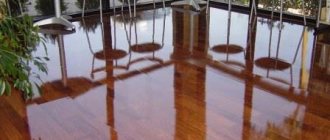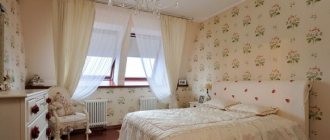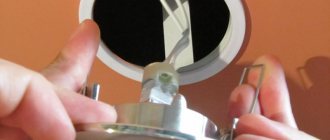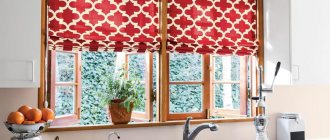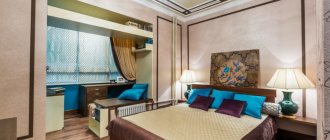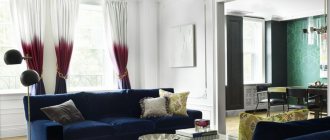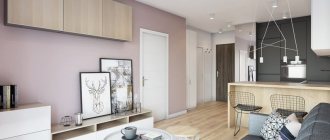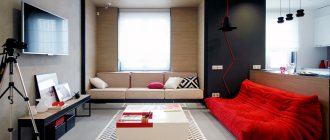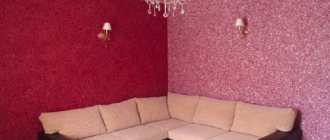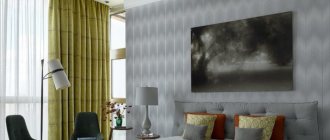Making tapestries
Simply put, a tapestry is a fabric carpet that depicts various landscapes. Initially, craftsmen manually created their masterpieces from gold, silver, wool and also silk threads. It took a lot of time to make one tapestry, and the master's masterpiece cost a lot of money.
Today, everything has changed. In order to create one beautiful tapestry, you only need high-tech equipment and a certain period of time. There is a noticeable difference between human work and robot work. Firstly, the landscape is more realistic, and secondly, production costs are not so high.
Nowadays, decorative tapestries are unusual curtains, exquisite bedspreads and pillowcases, the best alternative to a carpet, as well as panels, tablecloths, paintings, draperies and much more!
Story
The first samples of the material began to be produced before our era. This is confirmed by the burials of Egyptian kings and mythological stories of the ancient Greeks and Romans.
Tapestries were made in China, India and America.
After the Crusaders' campaigns, exotic carpets with patterns appeared in Europe. Gradually production was established in Germany, France and Flanders. The heyday of tapestry weaving occurred during the Renaissance, Baroque and Rococo periods.
In Russia, the tapestries manufactory opened in the era of Peter I with the participation of French craftsmen.
Initially, tapestries were called pileless carpets with three-dimensional drawings or plot compositions on biblical and ancient themes. Manual manufacturing technology involved weaving silk and wool threads together. Festive items were decorated with gold and silver embroidery. The work was labor-intensive and time-consuming. Tapestries were considered a work of art, artistic paintings that made up entire series. They were highly valued and made for wealthy people.
The term gobelin has French roots, where the Gobelin brothers' manufactory was opened and only their products were considered tapestries. The rest of the textiles were called trellises. Currently, this term unites all types of woven, patterned material.
We create a cozy atmosphere in the house with the help of tapestry paintings
Textile decoration, soft lighting - everything in your home should be conducive to a pleasant pastime and a relaxing holiday. Delightful tapestry canvases are the ideal solution if you dream of making your home cozy and follow current trends in interior design.
Made from woolen threads and artificial raw materials, such textiles will be a winning decoration for an apartment, office, hotel, made in the Baroque, English or French style. Art products will give coziness and comfort, especially with the onset of bad weather, when there is so little warmth and bright colors!
Decorative tapestries are extremely practical and durable. Such products are the best and most original solution for those who are endowed with artistic taste and prefer to surround themselves with easy-to-care, but high-quality and original products.
Picturesque panels and colorful paintings will become a bright accent, ennoble and refresh both residential and office space. In addition, tapestries are a beautiful gift for friends and family, which will not be difficult to choose due to the variety of storylines.
Tastefully selected decorative tapestries of various themes will become the basis for creating a comfortable homely atmosphere. Colorful products of modern design at affordable prices will make your home brighter and bring a touch of novelty and freshness.
Species difference
Noble material is divided according to several criteria.
Styles
The variety of patterns, colors and design solutions is classified into a number of categories:
- plain-dyed tapestries;
- melange;
- in embroidery style;
- with large ornaments;
- filled with small designs.
Compound
For the manufacture of trellises, a variety of threads and combinations of the composition of the raw materials are used.
- Sheep wool is durable and easy to dye.
- Silk, which favorably sets off the matte surface of cotton and wool, makes the material elegant.
- Synthetic component (polyester, viscose and acrylic) for sufficient wear resistance.
- Linen and cotton - plant fibers make the fabric lighter.
- Threads of gold, silver and lurex for decoration.
Density
The creaseability, strength, durability and weight of the finished fabric depend on this indicator. The area of application also determines the density. In furniture production and for sewing curtains, fabric with a value of 250-350 g/sq.m. is used. For clothing and accessories, a low density of up to 180 g/sq.m is sufficient.
Depending on the density of weaving, tapestries are produced as light, medium-heavy and heavy.
How to choose a tapestry picture or tapestry for the interior of your home?
Before you go to the store, you need to decide for yourself what role tapestries will play in the interior. Designers argue that a tapestry painting can be a powerful tool that tips the scales either towards an energetic interior or towards a comfortable and peaceful atmosphere.
It's up to you to decide which landscape to choose. But keep in mind that a tapestry can not only make the room taller and wider visually, but also adjust the proportions of the furniture in the room. Of course, in addition to tapestries, mirrors can help visually expand a room.
As mentioned earlier, a tapestry painting is a powerful weapon. What is meant? This piece of decor can either be practically invisible, not stand out against the background of the overall design of the room, or be the center of the universe.
Having decided for yourself what role the tapestry will play in the interior of your apartment, you can finally choose the pattern and color scheme.
There is another way
The stretcher is a very important part of the painting, but stretching the canvas onto the stretcher yourself is an option for the handy and economical. If you don’t want to waste time or you doubt your abilities, then you can purchase the painting already on a stretcher. The masters will do this for you and their level of professionalism will ensure the tension of the required quality, and you will be able to immediately hang the purchased picture on the wall.
Fashion
Minerals and jewelers
Minerals and jewelers
How to make a tapestry with your own hands
A tapestry is a fabric made by cross-weaving threads with the instant creation of a plot or ornamental composition. This is a fairly high-quality material, which, due to its two- or three-layer structure, seems somewhat heavy. A large number of multi-colored threads intertwined in a special way gives rise to amazing paintings, impressive with the finest color nuances.
The history of the appearance of this fabric goes back to the reign of the ancient Egyptian pharaohs. With the development of civilization, the art of creating elegant textile designs by hand, and subsequently on looms, began to increasingly expand its horizons. The material received the name known to our contemporaries in the 17th century, when French brothers named Gobelin opened a royal manufactory for the production of decorative woven fabrics with a dense structure.
Since the emergence of tapestry art, only the appearance and design of weaving looms have changed, but the technology for producing the material itself has remained the same. In the modern process of manufacturing decorative fabric, technically more advanced equipment is used.
Customer Reviews
In general, the tapestry evokes only positive emotions among the owners of products made from it. They note the special style and expressiveness of the external component of such products. The exquisite beauty of the fabric, distinguished by multiple weaves of colored threads folded into patterns, does not go unnoticed by connoisseurs of ancient art.
Despite all the advantages, customer reviews also touch on some of the tapestry’s disadvantages. Especially with regard to the rules for caring for products made from it. At the same time, thoughts immediately come to mind about the possibility of resorting to dry cleaning services.
A tapestry can fit very organically into a modern interior
Succumbing to the spirit of the harsh Russian winters, in 2020 the world's leading designers decided to give a second life to wall hangings and heavy bedspreads, but today these are no longer those terrible Soviet “masterpieces”, but real objects of art, which the tapestry catalog will help us understand. The photographs presented at numerous traveling handicraft exhibitions and websites amaze with the abundance of interesting topics; the subjects of the images of some of the works are comparable to rare paintings.
However, before you pay tribute to fashion and run to the store for an original piece of furniture, you need to understand what a tapestry is and how it is appropriate to attach this fabric to the walls. Tapestries are woven carpets, bedspreads or handmade paintings made from silk or wool threads. The technology consists in the fact that the process takes place in detail in several stages, and the finished parts, after their completion, are sewn together, and the types of threads are often mixed.
Sometimes the use of tapestry becomes an indispensable decorative technique, allowing you to create coziness and introduce an additional color accent into the interior design
Tapestries were made from wool and silk fibers by cross-weaving colored threads
People who love this type of art mostly prefer to purchase ready-made products at flea markets or in specialized departments of a fabric store, but you can make a tapestry with your own hands. To do this, you will need to buy the necessary material, equipment, study the technique from a book or any article from the Internet - and after a while you will be able to surprise your loved ones and guests with your own original decorative element. Today you don’t need to look for all the components separately; you can buy them all together in specialized handicraft departments that sell ready-made kits.
Carpets usually depict some kind of plot or ornament
If you, however, trust professionals more or simply don’t want to wait and work for a long time, but are eager to immediately get a tapestry on the wall in one of the rooms, you can go to the store and decide on the choice of pattern and type of embroidery. However, first you should correlate the future painting, bedspread or carpet with the overall style of the room; it wouldn’t hurt to preview the options in the photos offered on the Internet.
Pros and cons of tapestry fabric
The versatility of tapestry is due to a number of its advantages. One of the favorite materials of decorators conveniently combines the following qualities:
- variety of shades and color fastness;
- beauty of patterns and strength;
- unique texture and durability;
- visual appeal and practicality;
- high tactile properties and functionality.
The tapestry is not without some shortcomings. These include:
- the heaviness of certain types of fabric;
- rigidity, due to which the material is practically impossible to drape.
Types of fabric
Depending on the structure, the tapestry can be:
Density is determined by the weight of the fabric, depending on which it is divided into the following types:
According to the method of implementing design and color solutions, a tapestry can be:
- with large ornaments;
- with a small pattern;
- with patterns reminiscent of embroidery;
- melange;
- plain painted.
The method of weaving the warp and weft influences the fact that tapestry fabric is defined as:
Secrets from designers
- more than one wall hanging cannot be used in one room;
This is an absolutely universal decoration tool.
- each tapestry must be combined with other textiles;
- tapestry paintings look better when they are large enough;
A huge tapestry is a bright, spectacular decoration for a minimalist living room.
Wall woven fabric adds even more coziness and warmth to the room
- If you are using fabric as a bedspread or a set for a sofa, you should not immediately hang it on the wall or put a carpet on the floor; a painting would be more appropriate, but it is better to do without it at all.
Abstractly patterned trellis decor can be an interesting accent to a bright, open space in a modern or eclectic style.
If you decide on the classic use of a woven carpet and are going to place it at the head of the bed, or stretch it over the entire wall, you should think carefully about the image.
Decorate the wall behind the sofa with a large tapestry
